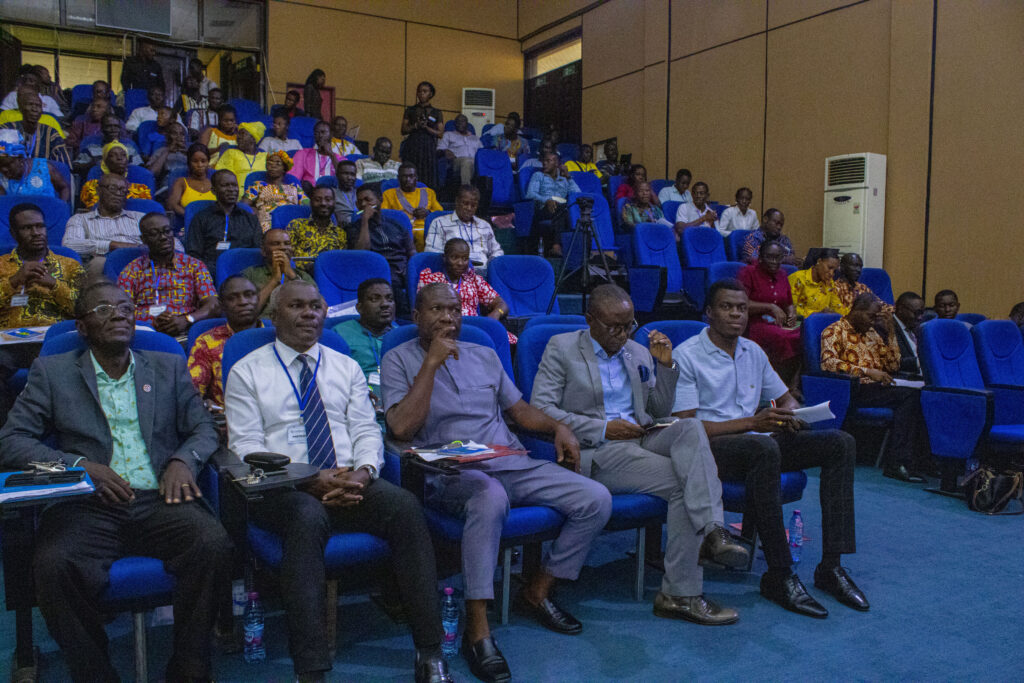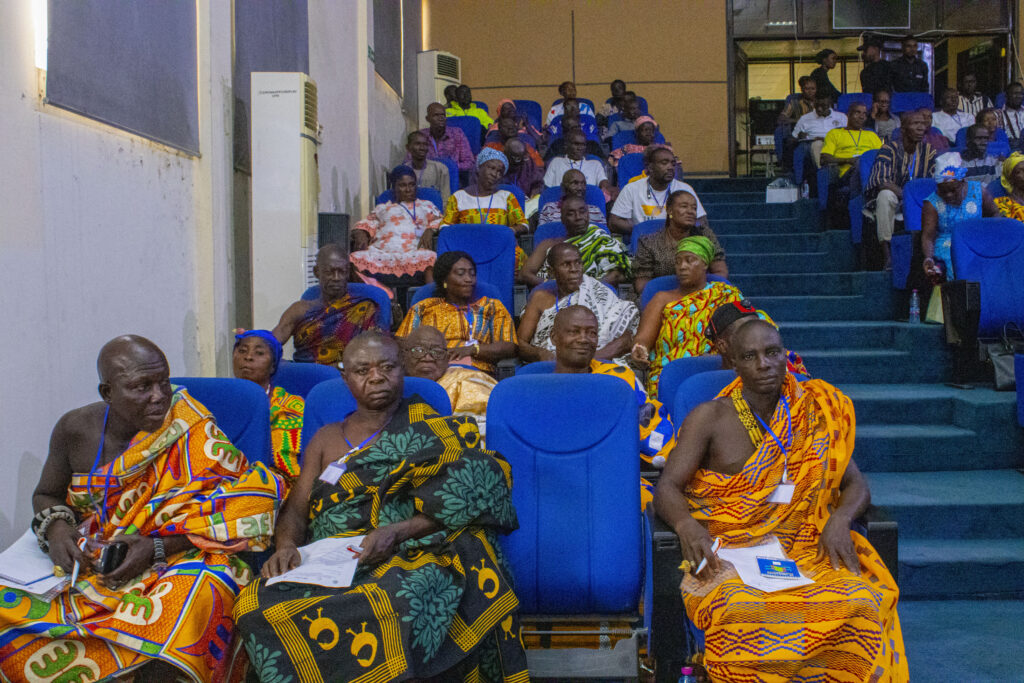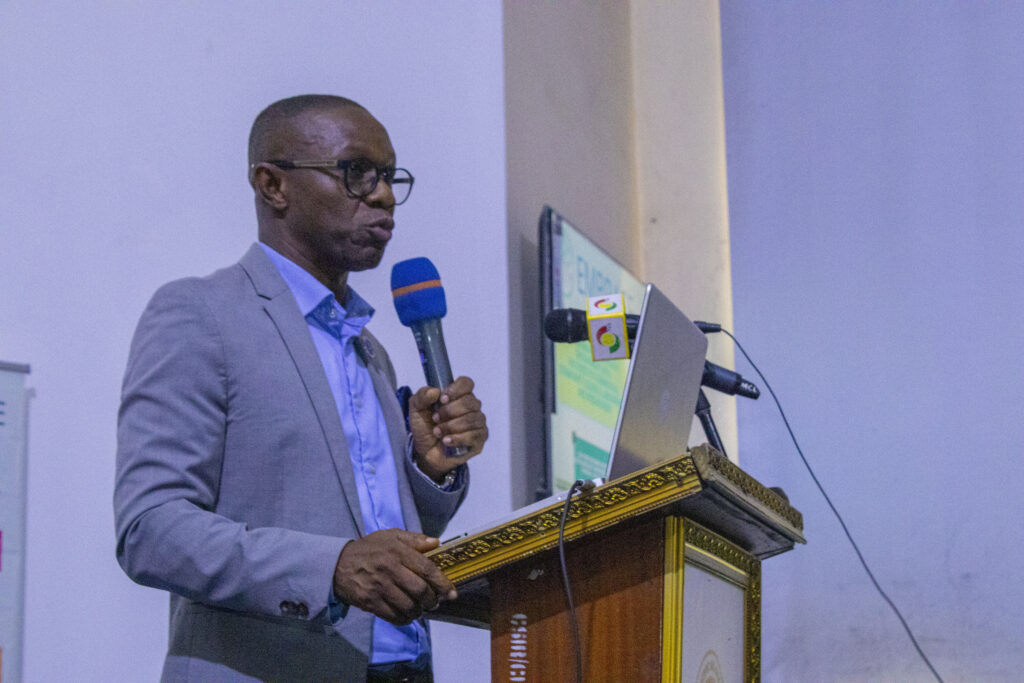HEALING THE LAND, PRESERVING HERITAGE: CSIR-CRI’S EMBRACE PROJECT TO RESTORE DEGRADED ECOSYSTEMS AND INDIGENOUS CROPS

Across many parts of Ghana and Kenya, landscapes once rich in biodiversity and vital for local livelihoods are being stripped bare by unsustainable human activities. Over the years, the cumulative effects of illegal mining, unchecked logging, and harmful agricultural practices have left large expanses of land degraded, threatening the survival of indigenous tree species and food crops that have fed generations.
In response to this growing ecological crisis, the CSIR-Crops Research Institute (CSIR-CRI) is leading a groundbreaking initiative — the Engaging Local Communities in Minor Crops Utilization for Biodiversity Conservation and Livelihood Enrichment (EMBRACE) project. Launched in 2024, the three-year project is working to restore 25 hectares of degraded land in both Ghana and Kenya while reintroducing neglected and endangered indigenous crops into farming systems.

The urgency of this intervention is underscored by alarming data on forest loss in Ghana. In 2022 alone, the country lost over 18,000 hectares of primary forest — a dramatic 70% increase compared to the previous year. According to recent global deforestation reports, this surge represents one of the steepest annual increases in forest depletion recorded in recent history.
Much of this loss is attributed to illegal mining (known locally as galamsey), unregulated timber harvesting, and the expansion of unsustainable agricultural lands. The environmental destruction has also resulted in the rapid disappearance of native crops and medicinal plants that once formed the backbone of rural diets, economies, and traditional health practices.
“Most of our indigenous tree species, like Odum and Mahogany, are endangered. The more we keep cutting them down without replacing them, the faster we lose these valuable resources,” warned Newton Annobil Attuahene, District Manager of the Forestry Commission in Bechem, during a recent community sensitization forum.
Restoring Lands, Reviving Crops

The EMBRACE project is designed not only as an ecological restoration effort but also as a cultural preservation campaign. Its dual focus on restoring forest cover and revitalizing indigenous food crops reflects a holistic approach to biodiversity conservation and rural development.
Principal Investigator of the project, Dr. Clement Oppong Peprah, explained that a key aspect of the intervention involves identifying and collecting the remaining seed stock of endangered crops from farmers’ fields, homestead gardens, and community seed banks. “Since many of these crops are no longer in mainstream cultivation, we’re working closely with farmers to gather and multiply the few surviving seeds they’ve preserved over the years,” he noted.
The project has so far focused on marginalized crops such as cocoyam, taro, and the nearly forgotten native yam variety locally known as Nteretere. These crops, once central to the culinary and medicinal traditions of many Ghanaian communities, have become increasingly scarce. Some young farmers and rural youth have never seen or tasted them, as they have been replaced by fast-growing, high-yield crop varieties suited for commercial agriculture.
An elderly farmer from a project community remarked, “We hardly see taro tubers nowadays. It’s scarce. We used to grow a yam called ‘Nteretere’ — but my children don’t even know what it looks like.”
Community Engagement and Stakeholder Dialogue

A recent major milestone for the EMBRACE project was its second stakeholder consultative dialogue, which brought together an array of participants including farmers, forestry officials, environmental activists, legal experts, researchers, and representatives from biodiversity conservation institutions. The dialogue focused on identifying practical, community-led solutions for degraded land restoration, indigenous crop preservation, and promoting sustainable land management practices.
Participants discussed the socio-economic and legal frameworks needed to support restoration efforts and the inclusion of minor crops in national and regional agricultural strategies. The forum also highlighted the cultural significance of minor crops and traditional tree species, emphasizing their role not only in nutrition and health but also in maintaining ecosystem services such as soil stabilization, water retention, and carbon sequestration.
The Director of CSIR-Crops Research Institute, Dr. Maxwell Darko Asante, emphasized that ecological restoration must go hand-in-hand with sustainable agricultural practices. He pointed out that the pursuit of higher yields through monocropping has come at a great ecological and cultural cost.
“It’s important that we don’t just focus on producing large acreages of one or two crops like rice or maize. Our agricultural systems must be diverse, resilient, and environmentally sustainable. That means valuing our indigenous and minor crops, which are often better suited to local conditions and critical for preserving the health of our ecosystems,” he said.

Dr. Asante reaffirmed CSIR-CRI’s commitment to working with local communities and partner institutions to achieve a more balanced, integrated approach to food security and environmental conservation.
Looking Ahead
The EMBRACE project is expected to contribute significantly to ongoing efforts to combat land degradation and biodiversity loss in West and East Africa. Beyond ecological restoration, the initiative aims to improve rural livelihoods by creating opportunities for farmers to cultivate and market indigenous crops, many of which command premium prices in local and international markets due to their nutritional and medicinal value.
As restoration activities continue and more communities join the movement, EMBRACE offers a promising model for integrating environmental conservation with sustainable agricultural development. By healing degraded lands and reviving lost food traditions, the project is laying the foundation for a healthier, more resilient, and culturally rich future for Ghana, Kenya, and beyond.
Authors: Bernard Sakyiamah, Dennis Gyasi Boakye, Enoch Bobie Agyemang

